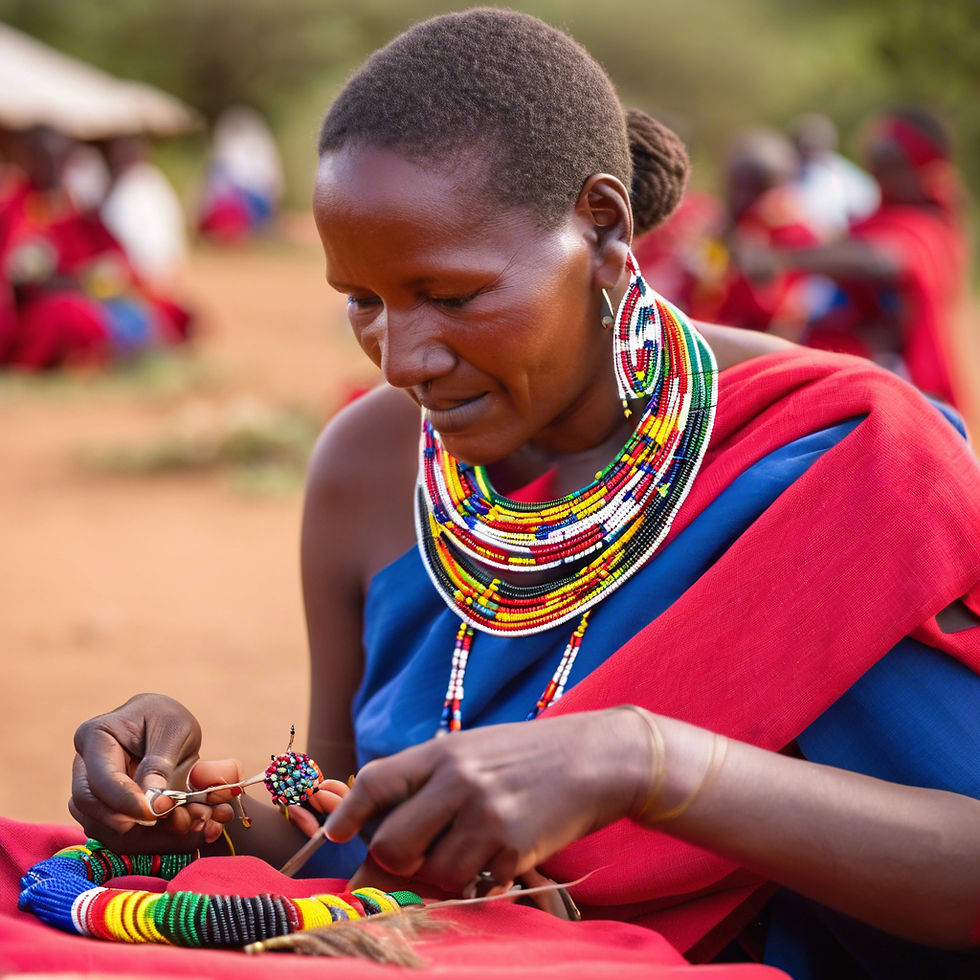Colors of Courage: The Artistry of Maasai Women’s Beadwork
- githureloise
- Mar 31
- 2 min read
Updated: Apr 9
In the sweeping plains of Kenya, the Maasai community stands as a testament to a vibrant culture sustained
by generations of tradition. At the heart of this cultural tapestry is the intricate beadwork crafted by Maasai women—a dazzling art form that serves as both adornment and communication.

In Maasai beadwork, color is not chosen randomly. Each hue holds specific meanings, communicating messages that are often more profound than words. Here are some of the vibrant colors you’ll find in Maasai beadwork and what they symbolize:
Red: The most prevalent color, red represents bravery, strength, and unity. It is a sacred color for the Maasai, symbolizing the blood of cattle, which is central to their pastoral lifestyle.
Blue: This color signifies energy and sustenance, akin to the vast sky that provides water, a source of life. It embodies the essence of the heavens and the provision they bring to the community.
Green: A color that represents nourishment and health, green speaks of the land and the rich vegetation that is essential for the Maasai's cattle, symbolizing growth, fertility, and peace.
Orange: Often associated with hospitality, orange reflects the warmth and generosity extended to guests. It symbolizes the welcoming nature of the Maasai community.
Yellow: The color of the sun, yellow signifies fertility and growth, capturing the ever-giving nature of the sun, which sustains life in the savanna.
Black: A symbol of unity and harmony, black is used to represent the daily lives of the Maasai people and their connectedness to one another and nature.
White: White signifies purity and health, symbolizing the milk that nourishes the Maasai and is central to their diet. It is also a symbol of peace and tranquility.
Beadwork and Identity
For Maasai women, beadwork is also a display of personal identity. The patterns and colors can denote a woman’s life stage, marital status, or social position. For instance, intricate necklaces might signal a transition from childhood to adulthood, while vibrant earrings could signify marital bonds.
As the world around them changes, Maasai women continue to evolve their beadwork, incorporating modern influences while steadfastly preserving their cultural integrity. Today, their beadwork transcends traditional boundaries, finding admirers worldwide while providing economic opportunities and empowerment for the artisans.

Comments